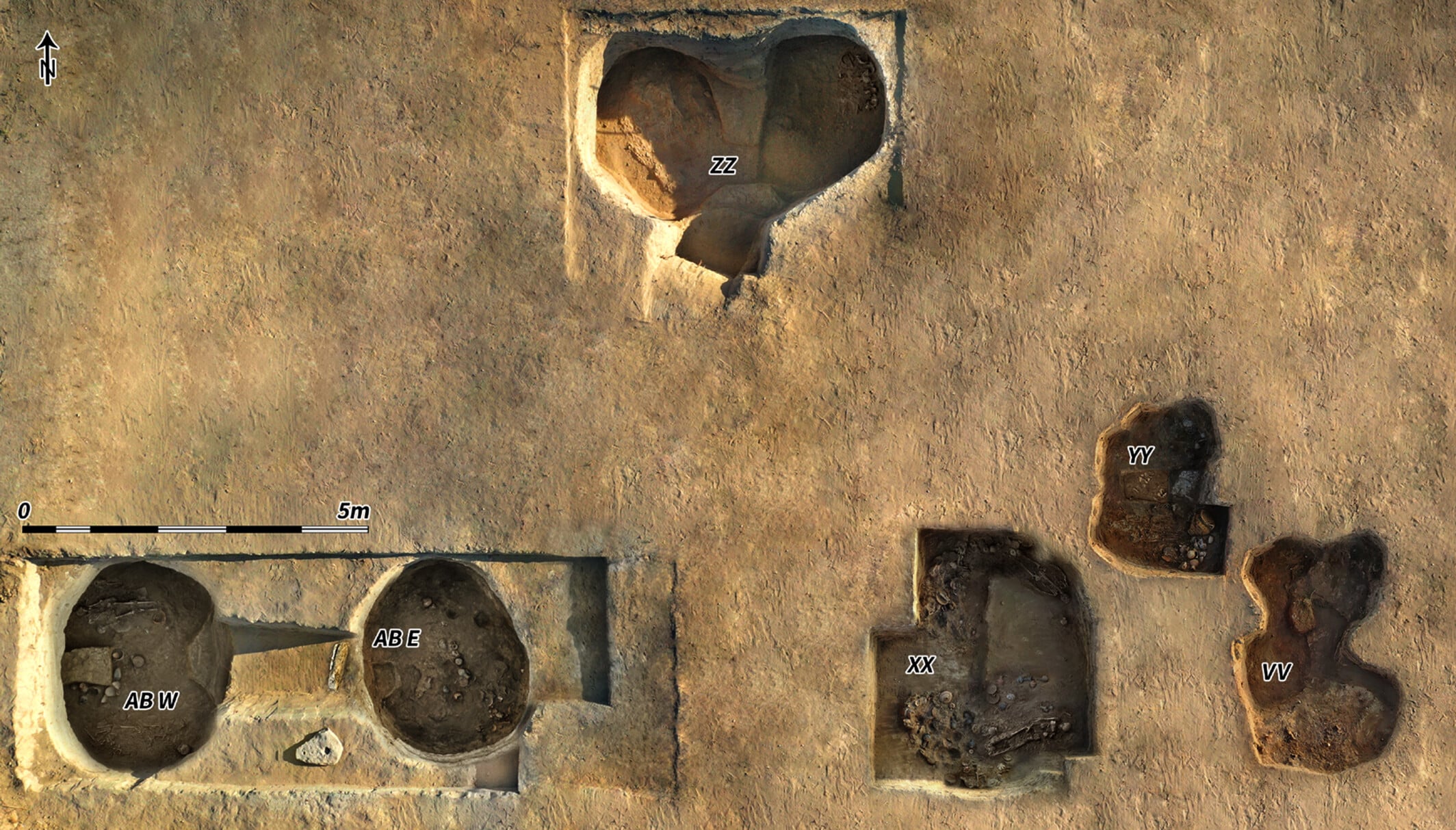

Archaeologists have discovered five small Bronze Age lead artifacts shaped like boats at the ancient site of Hala Sultan Tekke in Cyprus, offering rare insight into early fishing practices in the eastern Mediterranean.
The items date back more than 3,000 years and closely resemble artifacts found only once before—in the Uluburun shipwreck off the coast of modern-day Turkey.
Four of the lead artifacts were uncovered in a burial site called “Tomb ZZ,” while the fifth was located in what is believed to be a storage room within the city. Each object displays a clear boat-like shape with pointed or rounded ends, and some contain holes or grooves.
Researchers believe the items were not simple weights but carefully crafted fishing lures. When polished, the lead would have reflected light underwater, mimicking the shimmer of small fish and drawing in larger prey. The holes and grooves likely served as anchor points for hooks or fishing lines, pointing to a surprisingly advanced method of fishing for the period.
The site of Hala Sultan Tekke flourished between 1630 and 1150 BCE, positioned beside a protected bay now known as the Larnaca Salt Lake. Its strategic location and strong copper production helped make it a major trade center during the Late Bronze Age.

Yet beyond trade, archaeological evidence confirms the city’s dependence on the sea for food. Excavations have unearthed numerous fish remains, including mullets and groupers, underscoring the importance of fishing in daily life.
The lures’ designs have prompted further questions. While the boat-like form may have been functional, some researchers suggest it could carry symbolic or cultural meaning.
The shape may reflect the vessels in use, particularly a lightweight, versatile boat known as a “br,” which was common in the Levantine region and well-suited for fishing and local transport.
The most striking aspect of the find is its close connection to the Uluburun shipwreck, dated to around 1320 BCE—the same time Tomb ZZ was in use. The matching timeframe strengthens the possibility that similar fishing technology was shared or traded across the region’s maritime networks.
Experts note that ships during this period typically traveled at slow speeds, about 3 knots. This pace would have allowed fishing lures to remain submerged behind moving boats.
Alternatively, the gear could have been cast from either boat or shore and slowly pulled back until a fish took the bait. These techniques suggest intentional design beyond basic fishing weights.
Inside Tomb ZZ, the four lures were found alongside the remains of an adult man and woman, along with pottery, a cylinder seal, and a bronze hook, which indicates the pair may have been involved in fishing. The fifth lure, found near several stone net weights, supports the idea that the area served as a storage room for fishing gear.
The artifacts add a new chapter to the understanding of Bronze Age maritime life, highlighting the ingenuity and resourcefulness of early seafaring communities in Cyprus.
